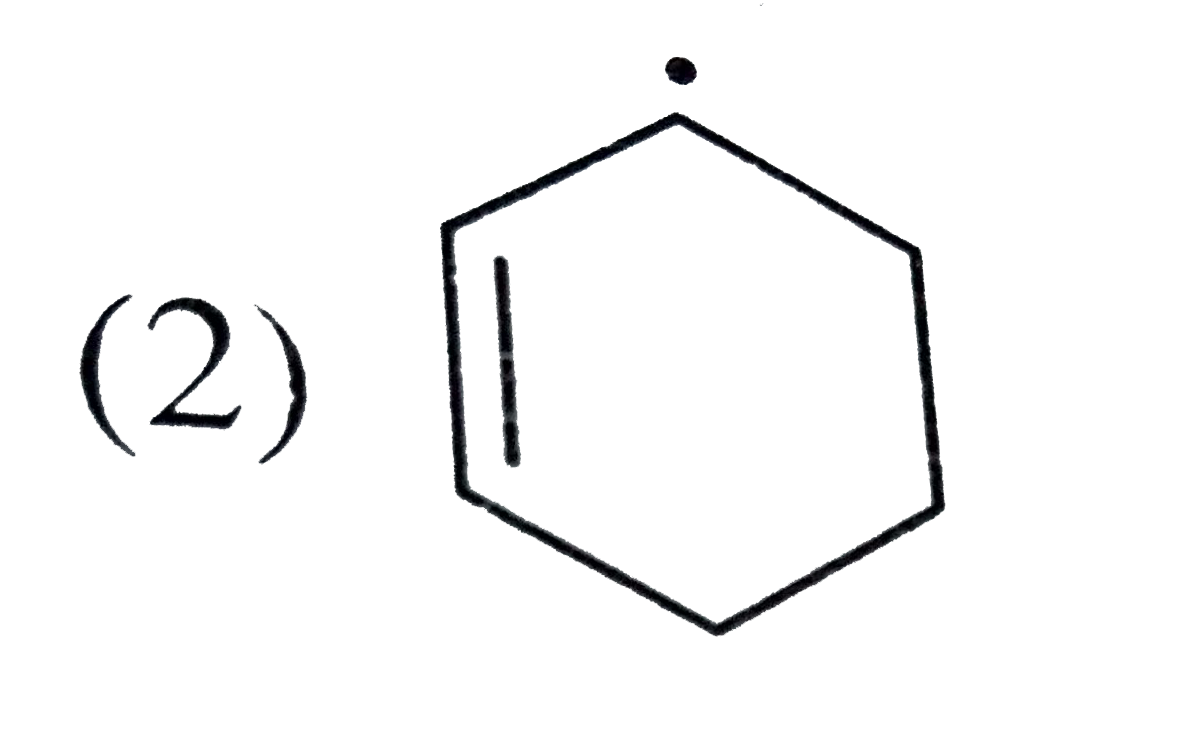Which one of the following is most stable




The correct Answer is:C
To determine which of the given options represents the most stable free radical, we can follow these steps:
Step 1: Analyze Each Option
- Option 1: This option has a primary free radical. Primary radicals are generally less stable due to the lack of alkyl groups that can donate electron density.
- Option 2: This option shows a free radical that is adjacent to a double bond, allowing for some resonance stabilization. However, it is still not as stable as higher-degree radicals.
- Option 3: This option features a tertiary free radical, which is inherently more stable due to the presence of three alkyl groups that can donate electron density. Additionally, it has a phenyl ring that can provide extended resonance stabilization.
- Option 4: This option is another primary radical with no resonance or additional stabilization, making it less stable.
Step 2: Compare Stability Factors
- Tertiary radicals (like in Option 3) are more stable than secondary and primary radicals due to hyperconjugation and inductive effects from surrounding alkyl groups.
- Resonance can significantly stabilize radicals, as seen in Option 2, but it does not compensate for the inherent stability of a tertiary radical.
Step 3: Conclusion
After analyzing the stability factors of each option, we conclude that Option 3 is the most stable free radical due to its tertiary nature and the additional resonance stabilization from the phenyl ring.
Final Answer
The most stable free radical among the given options is Option 3.
---
- Option 1: This option has a primary free radical. Primary radicals are generally less stable due to the lack of alkyl groups that can donate electron density.
- Option 2: This option shows a free radical that is adjacent to a double bond, allowing for some resonance stabilization. However, it is still not as stable as higher-degree radicals.
- Option 3: This option features a tertiary free radical, which is inherently more stable due to the presence of three alkyl groups that can donate electron density. Additionally, it has a phenyl ring that can provide extended resonance stabilization.
- Option 4: This option is another primary radical with no resonance or additional stabilization, making it less stable.
- Tertiary radicals (like in Option 3) are more stable than secondary and primary radicals due to hyperconjugation and inductive effects from surrounding alkyl groups.
- Resonance can significantly stabilize radicals, as seen in Option 2, but it does not compensate for the inherent stability of a tertiary radical.
After analyzing the stability factors of each option, we conclude that Option 3 is the most stable free radical due to its tertiary nature and the additional resonance stabilization from the phenyl ring.
The most stable free radical among the given options is Option 3.
Topper's Solved these Questions
Similar Questions
Knowledge Check
Which one of the follwing is most stable ?
A B
B C
C D
D
Which one of the following is the most stable ecosystem ?
AMountainBOceanCForestDDesertWhich of the following is the most stable?
APh3+CBPh2+CHCPh3CC+H2DPh+CH2
